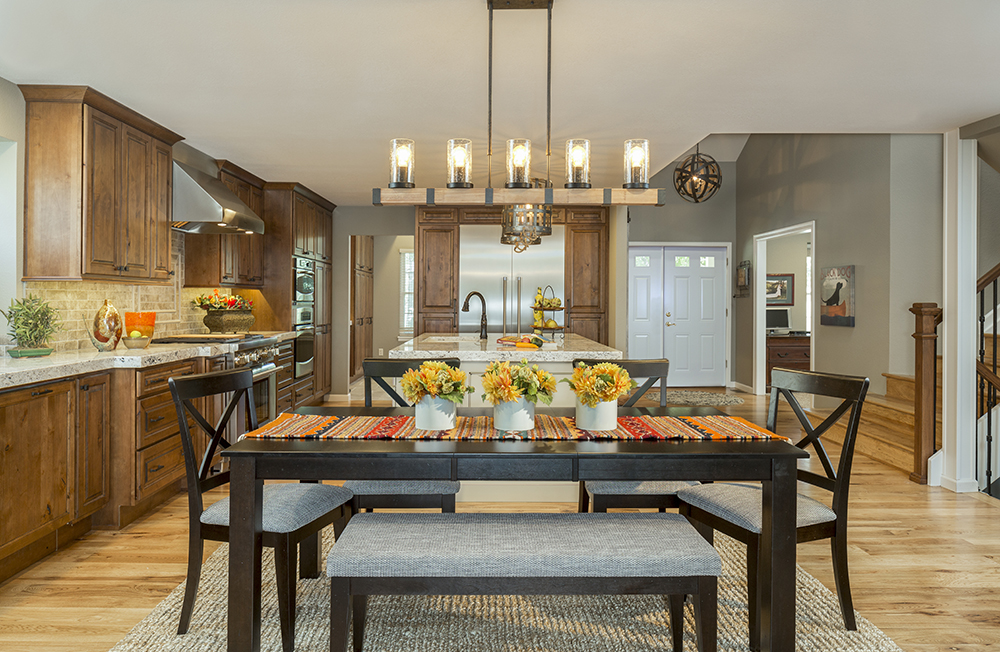Lighting is one of the most powerful yet underestimated elements of interior design. While furniture and color palettes get most of the attention, lighting has the ability to completely change the feel of a room. It can make it warmer, brighter, cozier, or more dramatic – depending on how it’s used. Whether you’re refreshing a single room or planning a full-scale remodel, understanding how to use lighting strategically can elevate your entire design.
Three Layers of Lighting
A well-lit space uses a combination of three types of lighting: ambient, task, and accent. Mastering the balance between these layers is key to creating both function and mood in any room. Ambient lighting is the primary source of lighting in a room that provides overall illumination. Think ceiling-mounted fixtures, recessed lighting, or large floor lamps. Ambient lighting is crucial for visibility and safety, setting the baseline brightness for the space. In living areas, consider dimmable fixtures to easily shift from daytime energy to evening relaxation.
Task lighting serves a functional purpose by illuminating specific areas where activities occur, such as reading, cooking, or working. Desk lamps, under-cabinet kitchen lights, and vanity lights in the bathroom are all examples. This lighting should be bright but focused, reducing eye strain while adding another layer of interest to the room.
Accent lighting is the final, decorative layer. It highlights artwork, architectural features, or design elements you want to emphasize. Wall sconces, LED strips, or directional spotlights can draw attention to a textured wall, a gallery display, or a stylish bookshelf. Accent lighting adds depth and drama to the room, making it feel more dynamic and personalized.
Choosing the Right Bulbs
Not all light bulbs are the same. The type of bulb you use influences both the brightness and the color temperature of the light, which can significantly impact the room’s mood. Warm light creates a cozy, inviting atmosphere that is great for living rooms, bedrooms, and dining areas. Cool white like is ideal for task-oriented areas like kitchens, bathrooms, or home offices. Daylight mimics natural light and is useful for workspaces or art studios where clarity and color accuracy matter.
Lighting as a Design Feature
Beyond functionality, lighting can be a design statement in itself. Bold chandeliers, sculptural floor lamps, or vintage pendants can serve as focal points. The right fixture can enhance the room’s style – whether it’s modern, rustic, industrial, or traditional. For example, a sleek pendant light over a kitchen island adds a modern touch, while a crystal chandelier brings elegance to a dining room. Layering decorative fixtures with subtle built-ins creates a versatile and visually engaging space.
For the living room, mix overhead lighting with table lamps and wall sconces. In the kitchen, combine ambient lighting with under-cabinet task lights and pendant lights over counters or islands. Soft, warm ambient light is perfect for the bedroom, along with bedside lamps to create a restful retreat. Bathrooms should have bright, even task lighting around mirror pair with softer overhead light for flexibility when grooming or relaxing.
Lighting is about visibility, but also atmosphere, comfort, and expression. Thoughtfully matching to each room’s purpose can transform a space. For more information on how to get the most out of your lighting, reach out to the experts at à la carte DESIGN today.
